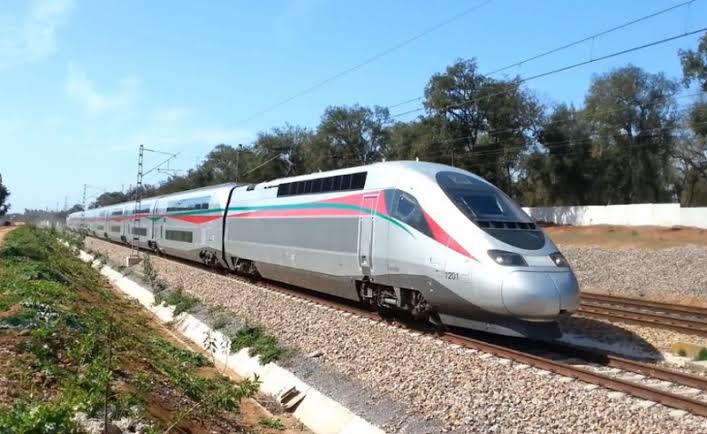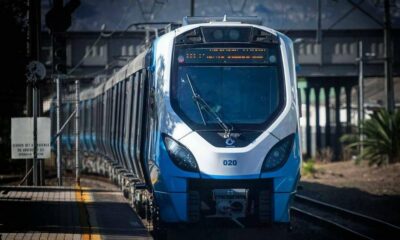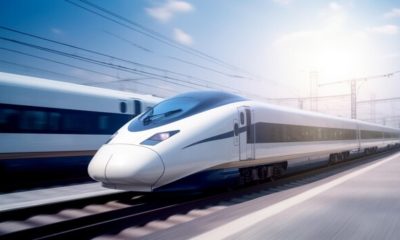News
All Aboard the Future: South Africa’s First Bullet Train Is Finally on Track

From dream to deadline: why this time might be different
South Africa has talked about high-speed rail for more than a decade, often with excitement but rarely with follow-through. Now, a long-envisioned plan to connect Pretoria and Polokwane with the country’s first bullet train seems to finally be leaving the station. The proposed Limpopo-Gauteng Speed Train Project has officially entered its crucial planning stage, with 2030 pegged as the target launch date.
For a country that’s grown used to potholes, minibus taxis, and delayed Metrorail commutes, the idea of boarding a sleek, high-speed train and arriving in Polokwane in 90 minutes feels almost surreal. But according to the Department of Transport, backed by the Gauteng and Limpopo provincial governments and private stakeholders, it’s becoming a reality, if everything stays on track.
2030 Vision: High-Speed, Low-Stress Travel
The first phase of the project will cover the Pretoria-to-Polokwane corridor, cutting the usual five-to-six-hour road journey down to just 1.5 hours. That’s thanks to an average speed of 177 km/h and top speeds above 200 km/h on certain stretches.
The full 500km route will eventually stretch beyond Polokwane, with stations planned in Hammanskraal, Bela-Bela, Mokopane, Louis Trichardt, and Musina. The project is more than a convenience; it’s a potential economic catalyst for smaller towns along the route.
While not quite reaching the dizzying speeds of Japan’s Shinkansen or France’s TGV, the train qualifies as high-speed under international standards and could revolutionise intercity travel in South Africa.
First the Tracks, Then the Trains
With feasibility studies and environmental impact assessments now underway, the project is in its most critical phase yet. These studies will determine whether the train is technically, financially, and environmentally viable.
But there’s a big hurdle, land. The planned route must pass through both urban and rural communities, making land acquisition and negotiations with stakeholders a delicate task. If all goes according to plan, construction could begin in 2026.
Transport Minister Barbara Creecy says revitalising the rail sector is a national priority. And there’s no shortage of ambition: Transnet is expected to ramp up annual rail freight from 149 million to 250 million tonnes, while PRASA hopes to restore 600 million passenger trips a year by 2030.
We’ve Heard This Before, Haven’t We?
South Africans have reason to be skeptical. High-speed rail has been the stuff of glossy brochures and political speeches since at least 2010, when it was first floated by then-Transport Minister Sibusiso Ndebele.
President Cyril Ramaphosa revived the dream in 2019, promising bullet trains running across provinces. In 2022, the government formalised the concept through a National Rail Policy White Paper, which was finally approved in 2023. His 2024 State of the Nation Address reaffirmed the government’s commitment, with feasibility studies being prioritised on routes like Johannesburg to Durban and Johannesburg to Mbombela.
The Cost of Speed
The biggest question? Who’s going to pay for it.
While the Limpopo-Gauteng route is expected to be fully funded by government, South Africa’s public purse is already stretched thin. The price tag for the Johannesburg-Durban line alone is around $30 billion (R530 billion), which makes foreign investors essential.
China has shown interest in that particular line, and similar partnerships could emerge for the Pretoria-Polokwane corridor if local funding hits a wall.
What South Africans Are Saying
On social media, the reactions are mixed. Some are cheering the project as long-overdue progress, while others are wary of delays, corruption, and the track record of unfinished infrastructure projects.
One Twitter user quipped, “If this bullet train arrives before Eskom fixes load shedding, I’m catching it straight to the future.” Another asked the hard question: “Will regular South Africans even be able to afford the ticket?”
Fair point. As with Gautrain, affordability will be key to public buy-in, especially for commuters who can’t afford to treat high-speed rail as a luxury.
A Bullet Train, Or a Pipe Dream?
Whether or not the Limpopo-Gauteng Speed Train becomes a reality by 2030, its progress signals something important: South Africa still has bold ambitions for the future. If managed properly, the project could serve as a symbol of what’s possible when infrastructure is built to serve both people and progress.
And if it derails? Well, it wouldn’t be the first time South Africans were promised the express lane, only to end up stuck in traffic.
{Source: BusinessTech}
Follow Joburg ETC on Facebook, Twitter , TikTok and Instagram
For more News in Johannesburg, visit joburgetc.com



























